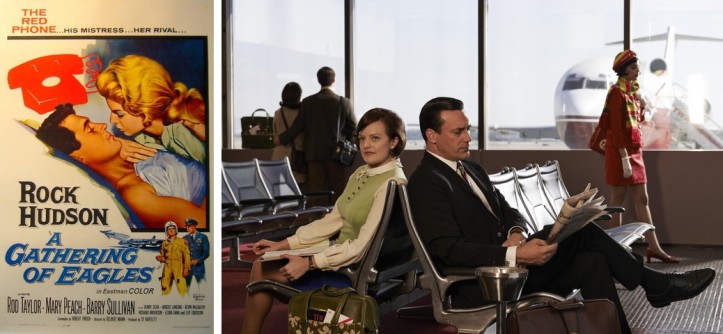 Although I like to think I am generally pretty ahead of the curve, I only recently started watching Mad Men. I guess I figured if everyone was watching it, I should probably watch something else. I can’t say I love the show, but what I do love is the aesthetic: lots of people have done enormous amounts of work to ensure that the look and feel of the show is as authentic as possible. And they’ve done an outstanding job.
Although I like to think I am generally pretty ahead of the curve, I only recently started watching Mad Men. I guess I figured if everyone was watching it, I should probably watch something else. I can’t say I love the show, but what I do love is the aesthetic: lots of people have done enormous amounts of work to ensure that the look and feel of the show is as authentic as possible. And they’ve done an outstanding job.
For those of you who (like me) have been living under a rock for the past few years, here is a summary of the birth of Mad Men that recently appeared in the Hollywood Reporter. (Cue music)
“Don Draper lived on hard drives for half a decade before anybody paid him any notice. In 1999, Matthew Weiner, then an unfulfilled writer on CBS’ Ted Danson sitcom Becker, spent his every off-hour doing research on the 1960s: what people wore, how they decorated their offices, what they ate and drank (and smoked, and drank some more). Then, over six days in the spring of 2001, he sketched out his vision for a show about the staff of a boutique advertising agency — Sterling Cooper — and its stylishly debauched head pitchman. Weiner’s Madison Avenue opus sat in a drawer for another three years — until a cable network with zero experience in original scripted programming (formerly American Movie Classics) stepped in and self-financed a pilot. Today, nine years later, Mad Men, which on April 5 begins its final seven episodes, is a pop cultural phenomenon that not only has made stars out of its cast of unknowns but also transformed AMC into one of the most influential networks on the dial and set off cable TV’s gold rush for scripted dramas. You can read the whole article here.)
 Think she was dancing to this?
Think she was dancing to this?
In 2009 Vanity Fair described the series this way:
Set in an advertising agency in the early 1960s, Mad Men debuted two summers ago and right off the bat earned itself two Golden Globes and a Peabody Award, and was nominated for 16 Emmys, becoming the first basic-cable series to win for outstanding drama. A more interesting measure of the show’s impact is the fact that its title has become a kind of shorthand: you can now talk about a Mad Men skirt or lampshade or pickup line where once you might have used “space age” or “Kennedy era” or “Neanderthal.” But while the show, like its subject, has many surface pleasures—period design, period bad behavior (if you like high modernism, narrow lapels, bullet bras, smoking, heavy drinking at lunch, good hotel sex, and bad office sex, this is the series for you)—at its core Mad Men is a moving and sometimes profound meditation on the deceptive allure of surface, and on the deeper mysteries of identity.
It’s a show that manages to hit all the right notes – anti-war, anti-Semitism, Martin Luther King, uppers, downers, first wives, young wives – with background music (like this, and this) that hits all the right notes. As the New York Times noted in a 2008 article devoted to the series, “when a Jewish department-store heiress comes to the agency in search of a fresh approach for her business, Sterling tries to find someone Jewish in the company to include in the meeting. “Have we ever hired any Jews?” he asks Draper. “Not on my watch,” Draper says, before adding, “You want me to run down to the deli and grab somebody?” (You can find the original NYT article here.)
There are even courses devoted to Mad Men, like the one described below:
“With its richness of detail and depth of characterization, Mad Men has an artistic ambition that reveals many influences. Series creator Matthew Weiner drew from literature, cinema, fashion, photography, architecture, music, and more, to help create the world of the show. His goal was not just to give us a realistic depiction of the period, but to delve deeper, to take us into the inner worlds of the show’s characters, into the obsessions, desires, and dreams that lie beneath the surface. For this film series, Weiner has selected ten movies that had an important influence on the creation of Mad Men, movies that made a deep impression on him and were required viewing for people working on the show. The films in this series all played an important role in making Mad Men such a great accomplishment as a narrative of America in the 1960s.”
My next post will look at Mad Men-inspired fashion, or perhaps, more accurately, the fashion that inspired Mad Men. Keep reading, and keep watching. The series, like Peggy’s hair, keeps changing color and direction. It’s captivating television: well-done, well-acted, and absolutely perfect entertainment for a night on the couch.

